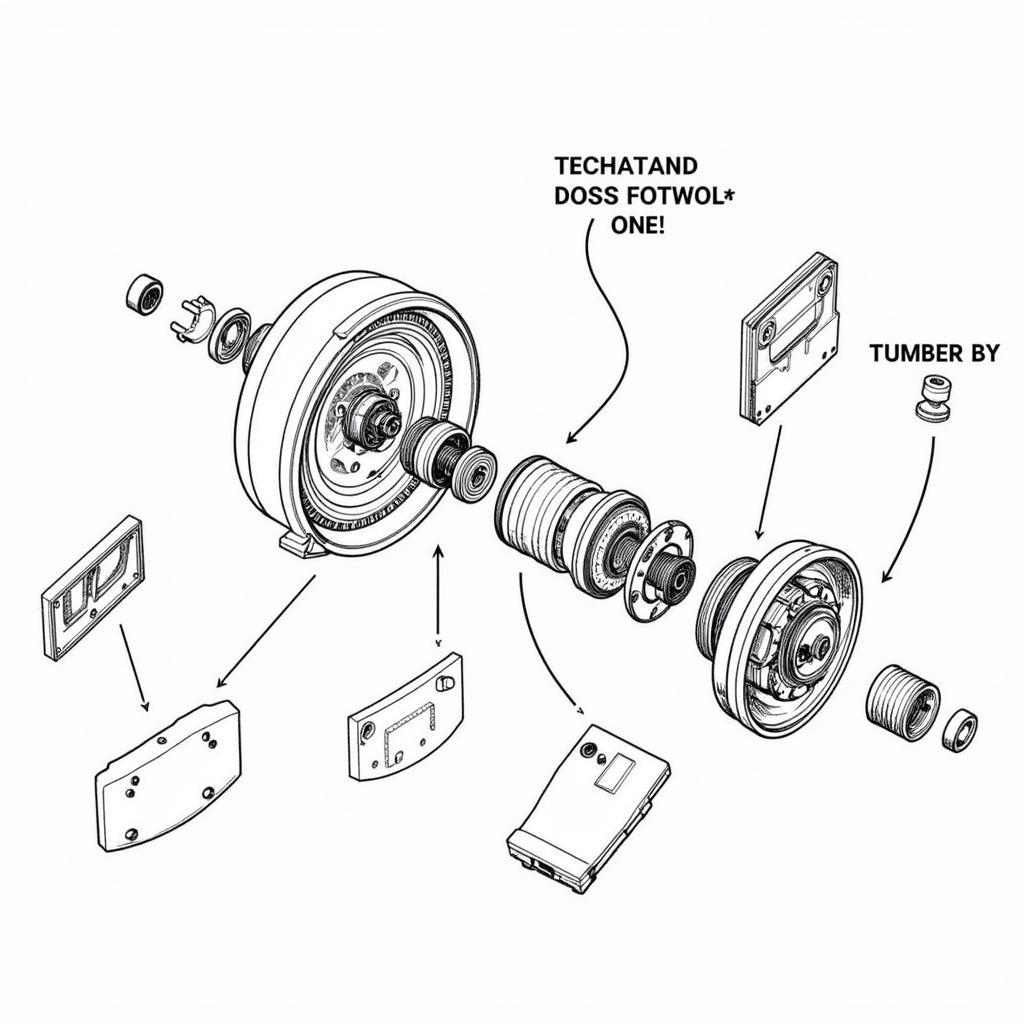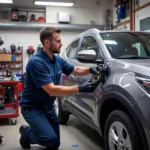Car door key cylinder repair can be a frustrating experience, but understanding the process and potential issues can save you time and money. This guide provides a detailed overview of everything you need to know about car door key cylinder repair, from diagnosing the problem to finding the right solution.
A broken or malfunctioning car door key cylinder can leave you stranded and vulnerable. It’s a crucial component of your vehicle’s security system and requires immediate attention if it starts to show signs of wear and tear. This comprehensive guide delves into the common causes of key cylinder problems, DIY solutions, when to seek professional help, and preventive measures to keep your car doors functioning smoothly. After the introduction, we’ll dive into specific issues related to car key cylinder repair. You can find more information on general car key repair at repair car key.
Understanding the Car Door Key Cylinder
The car door key cylinder, also known as the lock cylinder, is the part of your car door lock into which you insert your key. Its intricate mechanism tumblers inside align with the unique cuts on your key, allowing you to unlock and lock your car door. Over time, these delicate components can wear down, break, or become clogged with debris, leading to various problems.
Common Causes of Key Cylinder Problems
Several factors can contribute to car door key cylinder malfunctions. Understanding these causes can help you diagnose the issue and choose the appropriate repair method. Some common culprits include:
- Wear and Tear: Like any mechanical part, key cylinders degrade with time and use. Constant turning and insertion of the key can eventually wear down the internal components.
- Broken Key: A broken key lodged inside the cylinder can jam the mechanism and prevent proper operation.
- Debris and Dirt: Dirt, dust, and other debris can accumulate inside the key cylinder, obstructing the movement of the tumblers.
- Vandalism: Unfortunately, car locks can be targeted by vandals, who may attempt to force the lock or insert foreign objects, causing damage to the cylinder.
- Weather Exposure: Extreme temperatures and moisture can affect the lubricants inside the cylinder, causing them to dry out or thicken, hindering smooth operation.
DIY Car Door Key Cylinder Repair
Some key cylinder problems can be addressed with simple DIY solutions. However, more complex issues may require professional intervention.
Cleaning the Key Cylinder
A clogged key cylinder is a common issue that can often be resolved with cleaning. Use compressed air or a specialized lock lubricant to remove dirt and debris from the cylinder. Avoid using graphite-based lubricants as they can attract more dust and grime.
Extracting a Broken Key
If a broken key is stuck in the cylinder, try using a thin, sturdy tool, like a small screwdriver or a broken key extractor, to carefully remove the fragment. If you’re unsure or unsuccessful, contact a professional locksmith.
If you need assistance with car key repair in Cambridgeshire, consider checking out repair car key cambridgeshire.
When to Seek Professional Help
While some key cylinder repairs can be handled at home, certain situations warrant professional assistance. If you experience the following, it’s best to consult a qualified locksmith or car mechanic:
- The key turns but doesn’t unlock the door: This could indicate a problem with the internal linkage between the cylinder and the locking mechanism.
- The key won’t insert fully or at all: This might suggest a bent or broken key, a damaged cylinder, or a foreign object lodged inside.
- The cylinder feels loose or wobbly: This can indicate a problem with the cylinder’s mounting hardware. You can also get help with car key ignition repair if needed.
“A worn or damaged key cylinder not only compromises your car’s security but can also lead to more expensive repairs down the line,” says John Smith, a certified automotive locksmith with over 20 years of experience. “It’s always best to address these issues promptly.”
For those in the Tonbridge area, car key repair tonbridge can be a helpful resource.
Preventing Key Cylinder Problems
Taking proactive measures can significantly extend the life of your car door key cylinder and prevent future issues. Here are some preventive tips:
- Regular Lubrication: Periodically lubricate the key cylinder with a dry PTFE-based lubricant. This helps keep the internal components moving smoothly and prevents them from seizing.
- Keep the Cylinder Clean: Regularly clean the key cylinder to remove dirt and debris. This helps prevent clogging and ensures smooth operation.
- Avoid Force: Never force your key into the cylinder. If it doesn’t insert smoothly, there may be an underlying problem. Forcing the key can damage the cylinder and the key itself.
“Preventive maintenance is key to avoiding costly car repairs,” advises Jane Doe, a seasoned mechanic specializing in automotive lock systems. “A little care and attention can go a long way in keeping your car’s key cylinders functioning properly for years to come.”
Conclusion
Car door key cylinder repair can range from simple cleaning to more complex repairs requiring professional assistance. By understanding the common causes of problems, practicing preventive maintenance, and knowing when to seek expert help, you can keep your car doors functioning reliably and securely. Regular maintenance and timely repairs are essential for the longevity and security of your vehicle. Don’t delay addressing car door key cylinder issues, as they can worsen over time and lead to more significant problems. Information on how to repair car after getting keys out can also be very useful.
FAQ
- How much does it cost to replace a car door key cylinder? The cost varies depending on the car make and model, but it typically ranges from $50 to $200.
- Can I replace a car door key cylinder myself? Yes, you can, but it requires some mechanical skills and the right tools.
- How do I know if my car door key cylinder is bad? Signs include difficulty inserting or turning the key, the key not turning at all, or the lock not engaging.
- How long does it take to replace a car door key cylinder? It usually takes between 30 minutes to an hour.
- What tools do I need to replace a car door key cylinder? You’ll need a screwdriver, a door panel removal tool, and possibly a new retaining clip.
- Can I use WD-40 on my car door lock cylinder? It’s not recommended, as it can attract dirt and gum up the lock mechanism.
- How can I prevent my car door key cylinder from freezing in winter? Use a de-icer or a specialized lock lubricant designed for cold weather.
For support, contact WhatsApp: +1(641)206-8880, or email [email protected]. Our customer service team is available 24/7.


